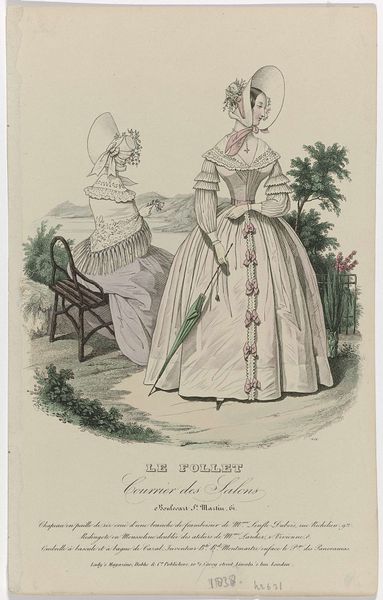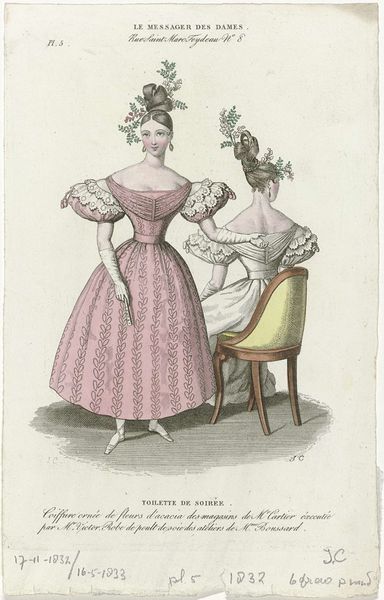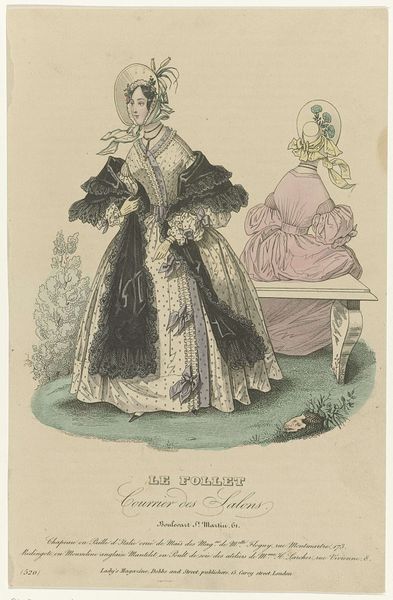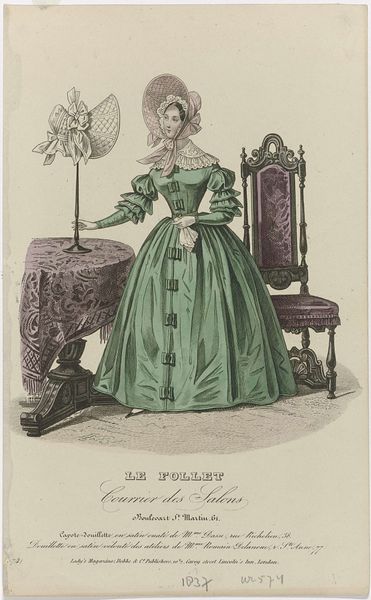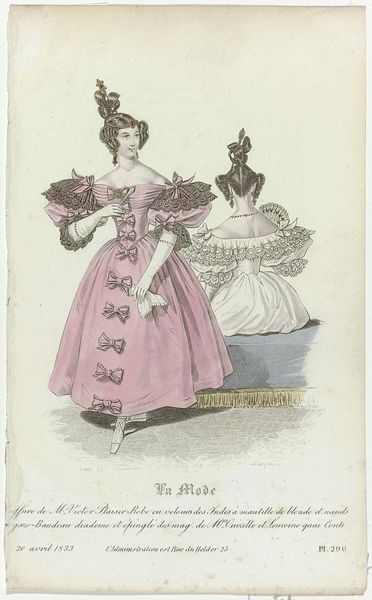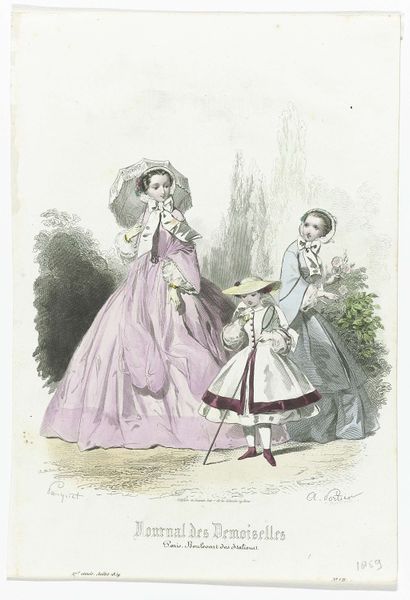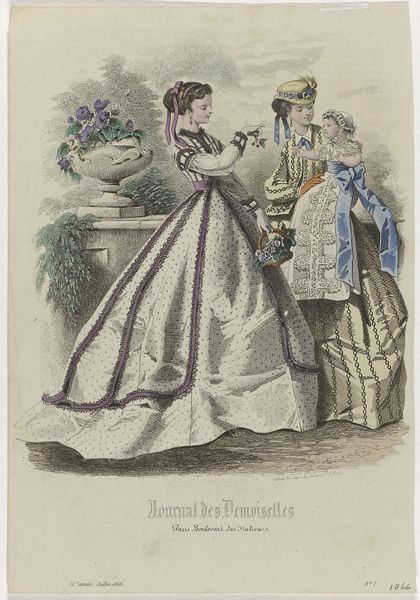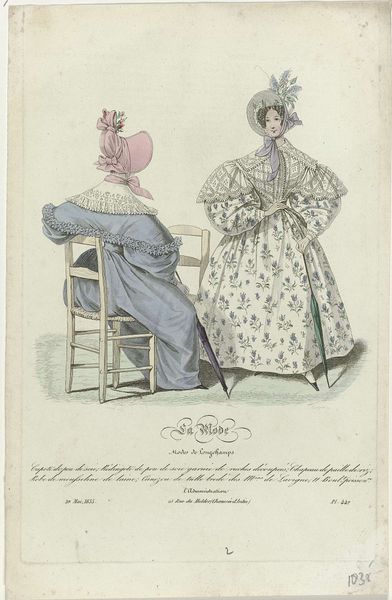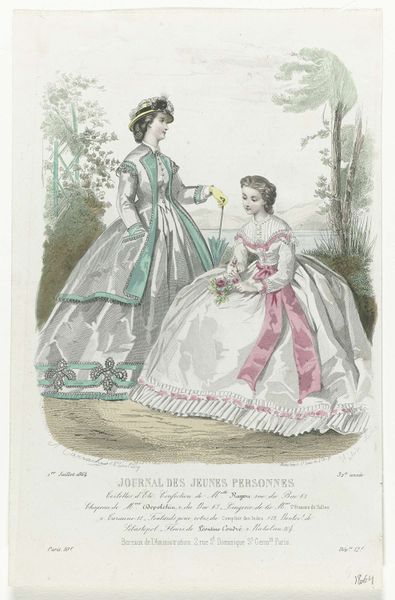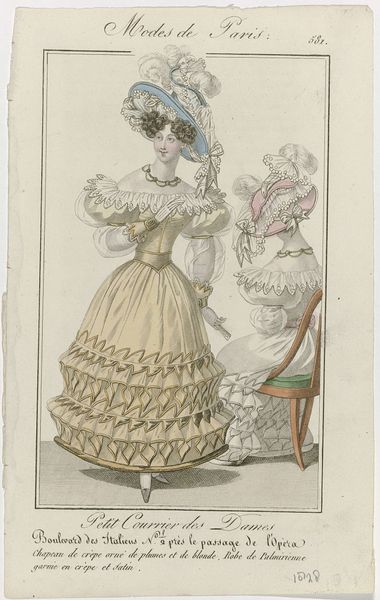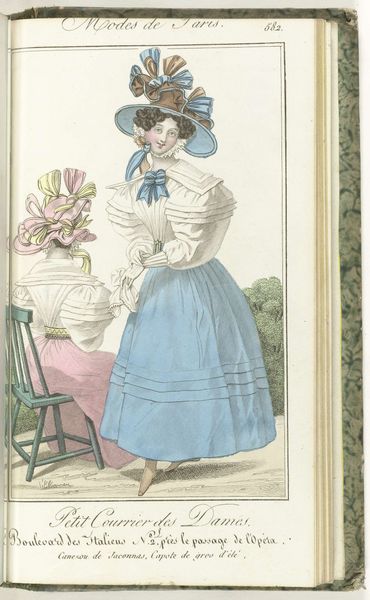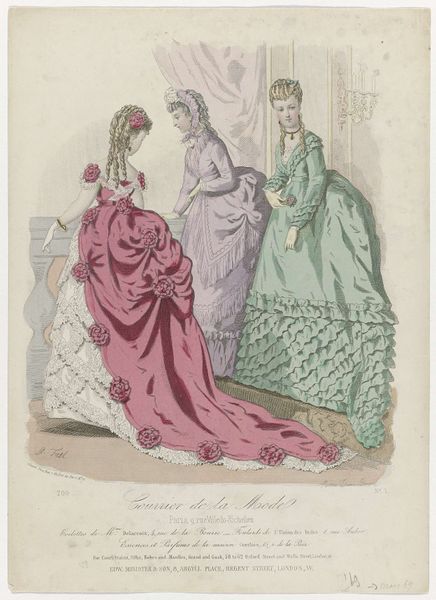
Le Follet Courrier des Salons, 1837, No. 569: Bonnet en tule garni de Marabouts (...) 1837
0:00
0:00
# print
#
figuration
#
romanticism
#
watercolour illustration
#
genre-painting
#
dress
Dimensions: height 247 mm, width 153 mm
Copyright: Rijks Museum: Open Domain
Curator: This print, titled "Le Follet Courrier des Salons, 1837, No. 569" depicts the fashion of its time with a remarkable focus on the details of attire. It’s fascinating to examine how form defines status in this era. Editor: The overwhelming frilliness! So many puffs and flowers, it's all fabric, structure and ostentation—how much would this thing weigh? I'm drawn to the sheer labour embedded in such finery. Curator: Indeed! Consider how the visual language emphasizes specific lines, creating a distinct silhouette. Note how the rounded forms of the bonnet, the sleeves, and especially the dress's voluminous skirt repeat in a calculated manner. It almost perfectly aligns with the romantic era ideal. Editor: And all that intricate detail…it speaks to the immense labor required. This wasn’t fast fashion. Someone painstakingly stitched every Marabou and puff in that garment. The social context surrounding its creation must be crucial to understanding its significance. Curator: Absolutely. The visual elements work together, too. Observe the pastel color palette, from the blush-pink gown to the pale-blue dress in the background, contributing to the overall impression of delicate refinement and a sort of dream-like innocence. Editor: And what about accessibility? Such craftsmanship and obviously rich materials suggest that these fashions, as depicted, were attainable only to a small, privileged segment of society, which, of course, tells another story of consumption in 1837. Curator: You raise an important point. Semiotically, these details function as signifiers, communicating the wearer's social standing. Each design choice carries cultural weight and serves a symbolic purpose, indicative of aspirations and social conventions. Editor: Ultimately, beyond its symbolism or structure, for me, this image brings into focus the many hands involved in its making. I think a materialist approach allows one to delve more deeply into the processes of its creation. Curator: A valid point; together we have highlighted the romantic essence of the image, along with the detailed formal design and rich materiality! Editor: Yes, examining both the craftsmanship and the wider socio-economic setting gives depth to understanding it.
Comments
No comments
Be the first to comment and join the conversation on the ultimate creative platform.
